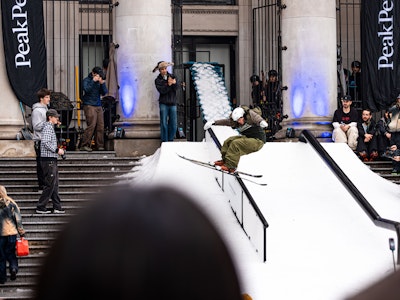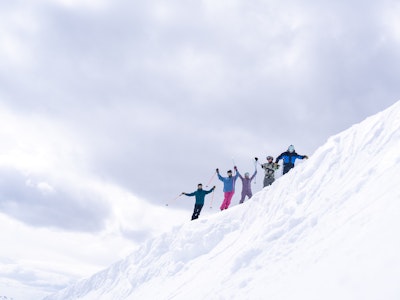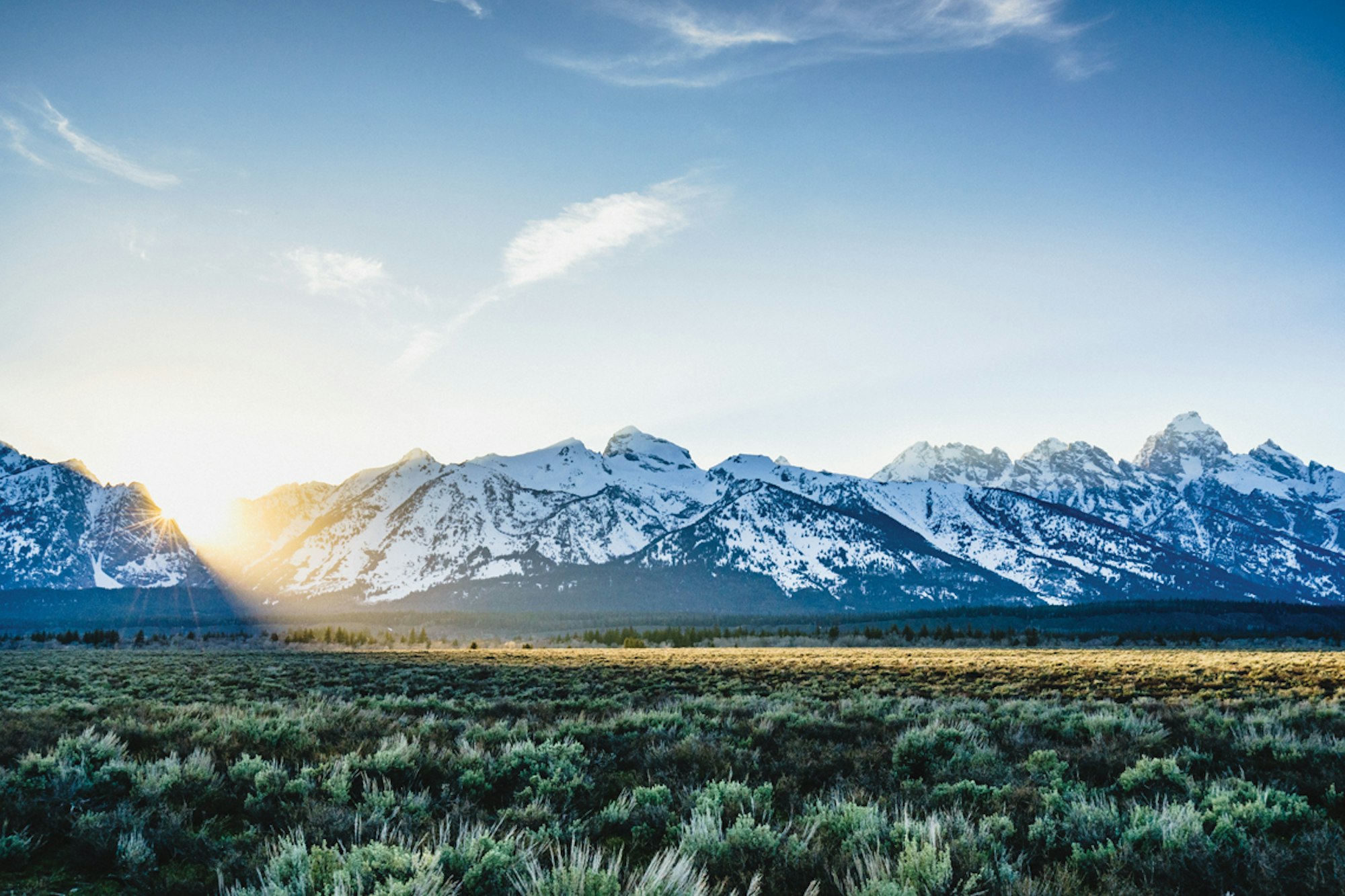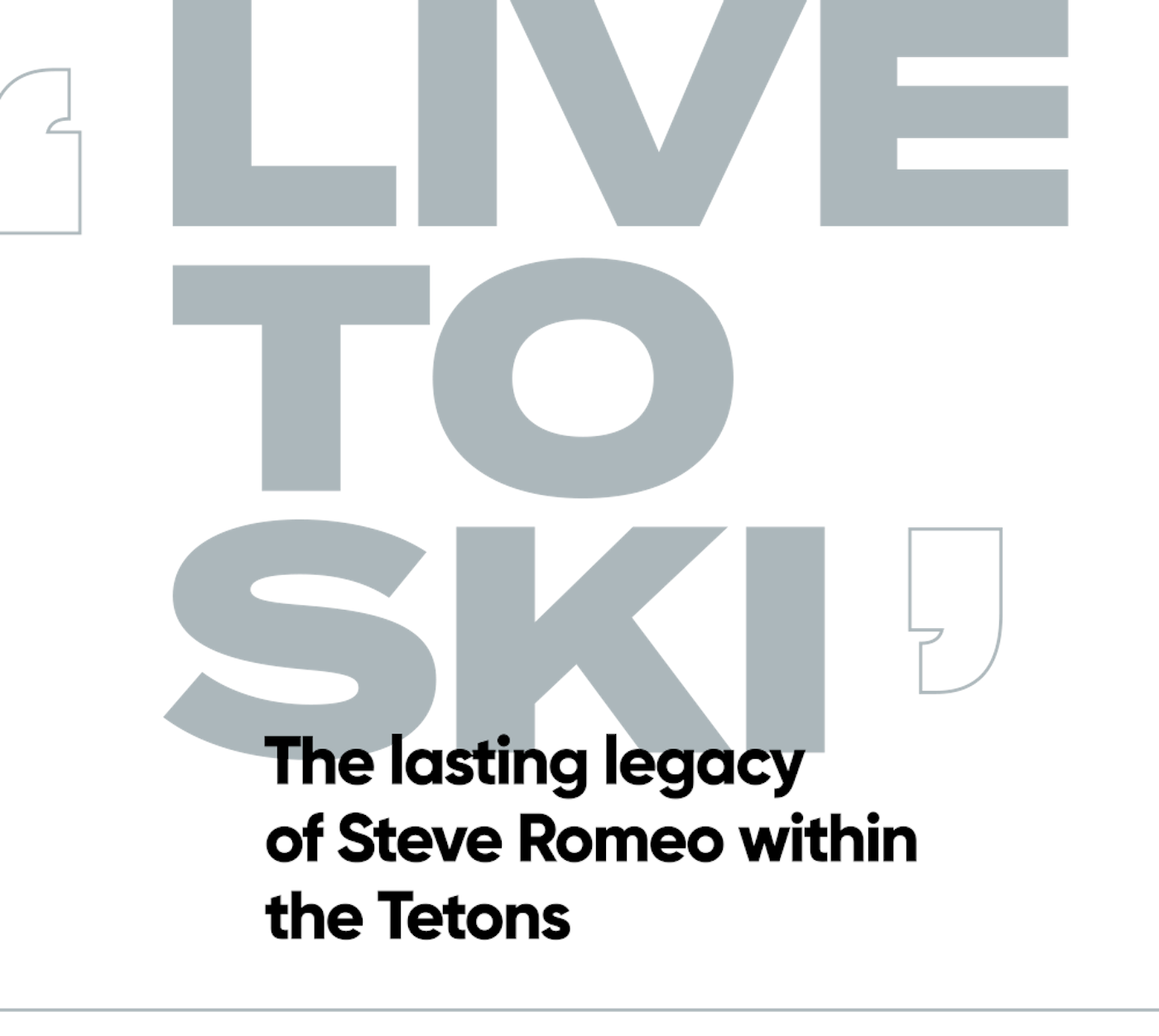
LOCATION • Grand Teton National Park, WY
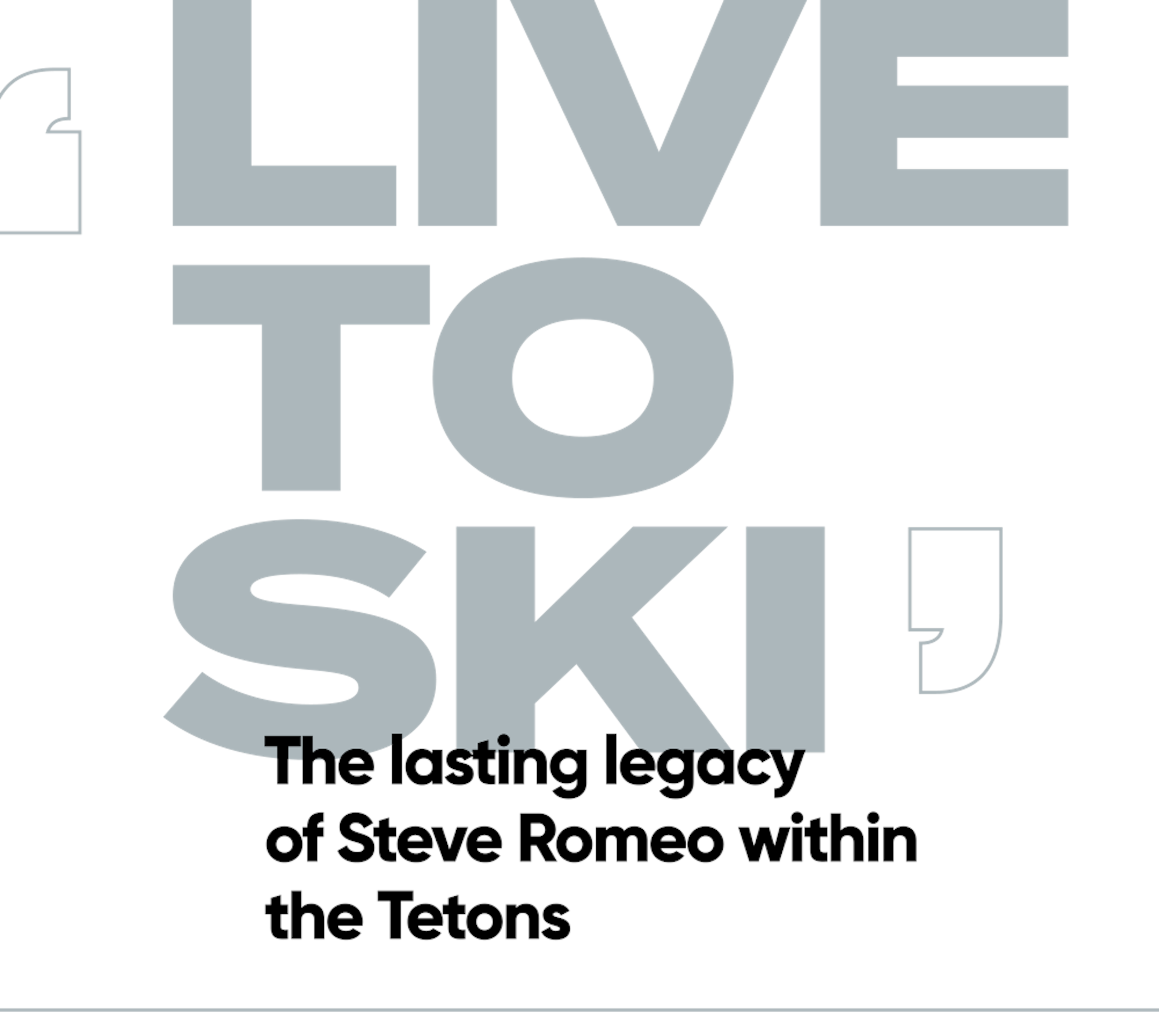
WORDS • ERME CATINO | PHOTOS • LOUIS AREVALO
LOCATION • Grand Teton National Park, WY
The frosty water massaged my toes as we launched our canoe into Leigh Lake in Grand Teton National Park. After a season’s worth of being fastened into ski boots every day, they exhaled a sigh of relief before the water’s temperature brought them back to reality. After this moment of respite, Louis Arevalo, Charlie Thomas and I pushed off from shore loaded with ski and camping gear.
The Tetons, still cloaked in their pearly white coat, were spilling their winter’s bounty. The spring melt was running high and streams echoed throughout the various canyons as we paddled across—cruising towards our campsite for the evening at the mouth of Leigh Canyon. Mt. Moran’s south face, patchy in its snow cover towards the shore, contrasted Rockchuck Peak’s snowy north- facing chutes. The evening was warm and still as dark clouds brewed high in the distance to the west. Spring’s battle with winter and summer seemed to have trended towards the latter, yet we were keen to see if we could squeeze out the last gasps of winter fun. And with the north side of the road in Grand Teton National Park finally open, granting easier access towards those ski lines, a proper adventure was in order.
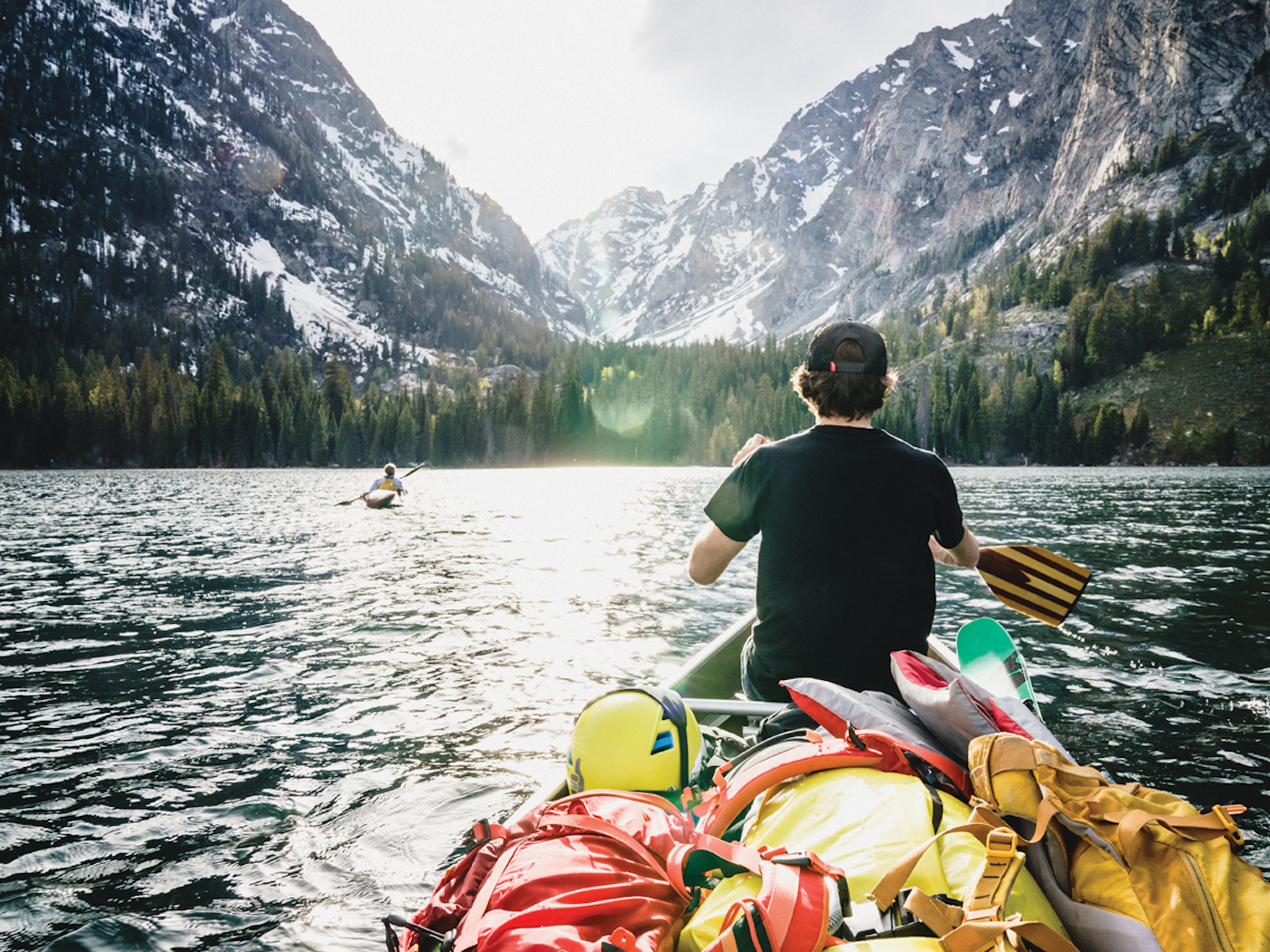
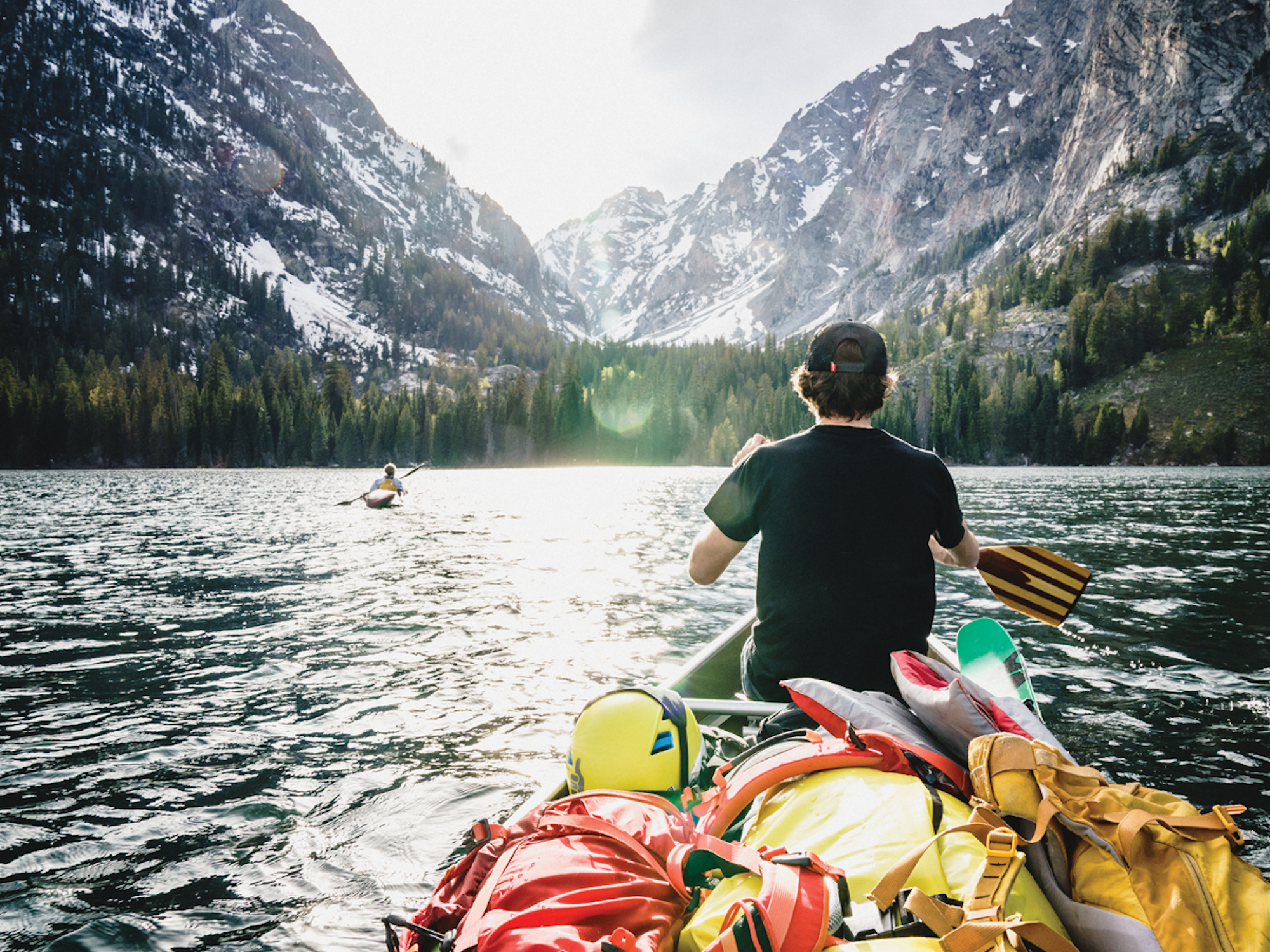
It is inevitable to stand in awe of the Tetons. Rising sharply from the Snake River Valley, the peaks of Grand Teton National Park have lifetimes worth of backcountry skiing objectives. Often their approach, even when you can skin and not have to canoe, deters skiers who value the easy access of backcountry laps off Jackson Hole Mountain Resort or Teton Pass. But for those who don’t mind a few extra miles of climbing, big descents are abundant and allusive.
The evocative ski possibilities within the park are likely what drove the late Steve Romeo to launch TetonAT.com in 2006—a blog that still serves as the finest resource for skiing within the park. The site was his passion and has served the test of time, even in the age of social media overload, and is just a small part of the impression Romeo left after he sadly passed away in an avalanche on Ranger Peak in March 2012.
“There was a lot of talk of Steve being too much of a risk taker [after his passing],” says Julia Heemstra, Steve Romeo’s former girlfriend. “Yet, to this day, Steve was one of the safest people I’ve ever skied the backcountry with. He was really methodical and was very sequential with how skiing in the backcountry should happen.” Romeo’s approach was to always ski a line in style, and not be over his head. In this vein, he attempted the Grand Teton several times before successfully skiing it. Through his love of skiing and adventure, he spoke to skiers near and far as he published trip report videos on TetonAT. His narrations of descents in his footage always came across un-abashed and sincere.
“It was clear to me during the first few hours after his death that Steve would want the blog to live on,” explains Heemstra. “He had invested so much with TetonAT, and when we first met I remember he kept asking if I had read his blog yet… It really mattered to him,” Heemstra notes while recounting their first date ten years ago, one that consisted of free-soloing the Grand the morning before a friend’s wedding.
Heemstra was Romeo’s partner for four and a half years and the two had only recently gone their separate ways prior to the accident. “I was the first person the park ranger called. They asked if I knew where he [and his ski partner Chris Onufer, who also perished in the slide] were, and I did.”
With family back east in Manchester, Connecticut—Romeo fled for the Tetons after graduating college in 1993—Heemstra planned his memorial, cleaned out the condo and, with the assistance of his mother Elaine, launched the Steve Romeo Memorial Fund through the Community Foundation of Jackson Hole. Today, the fund supports various organizations that encompass his mantra of “Live to Ski,” supporting mountaineering instruction and safety, school scholarship (of which Charlie’s son received), as well as avalanche training and education. Additionally, the fund keeps his website alive and running, which serves as an archive for beta regarding backcountry missions within the park.
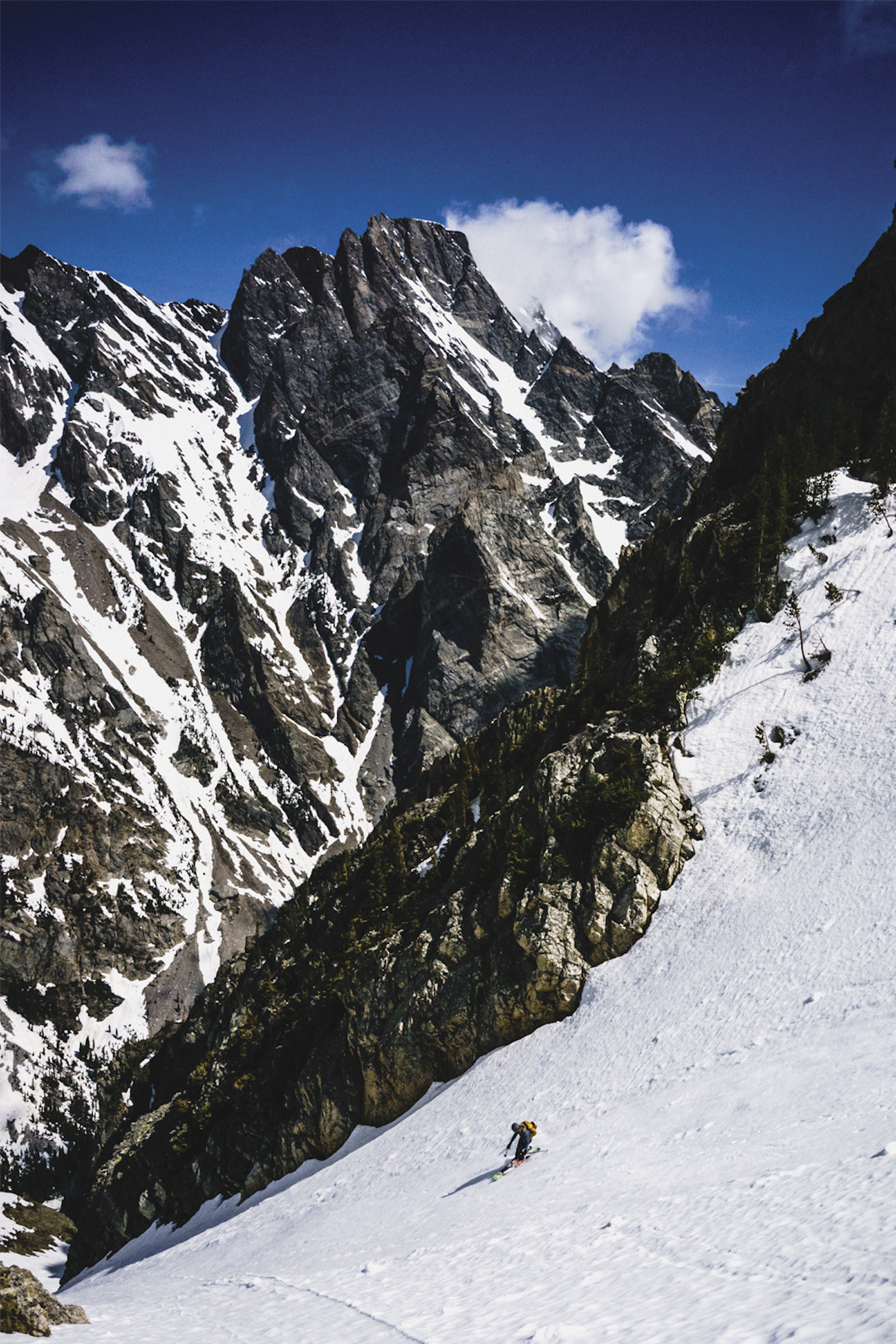
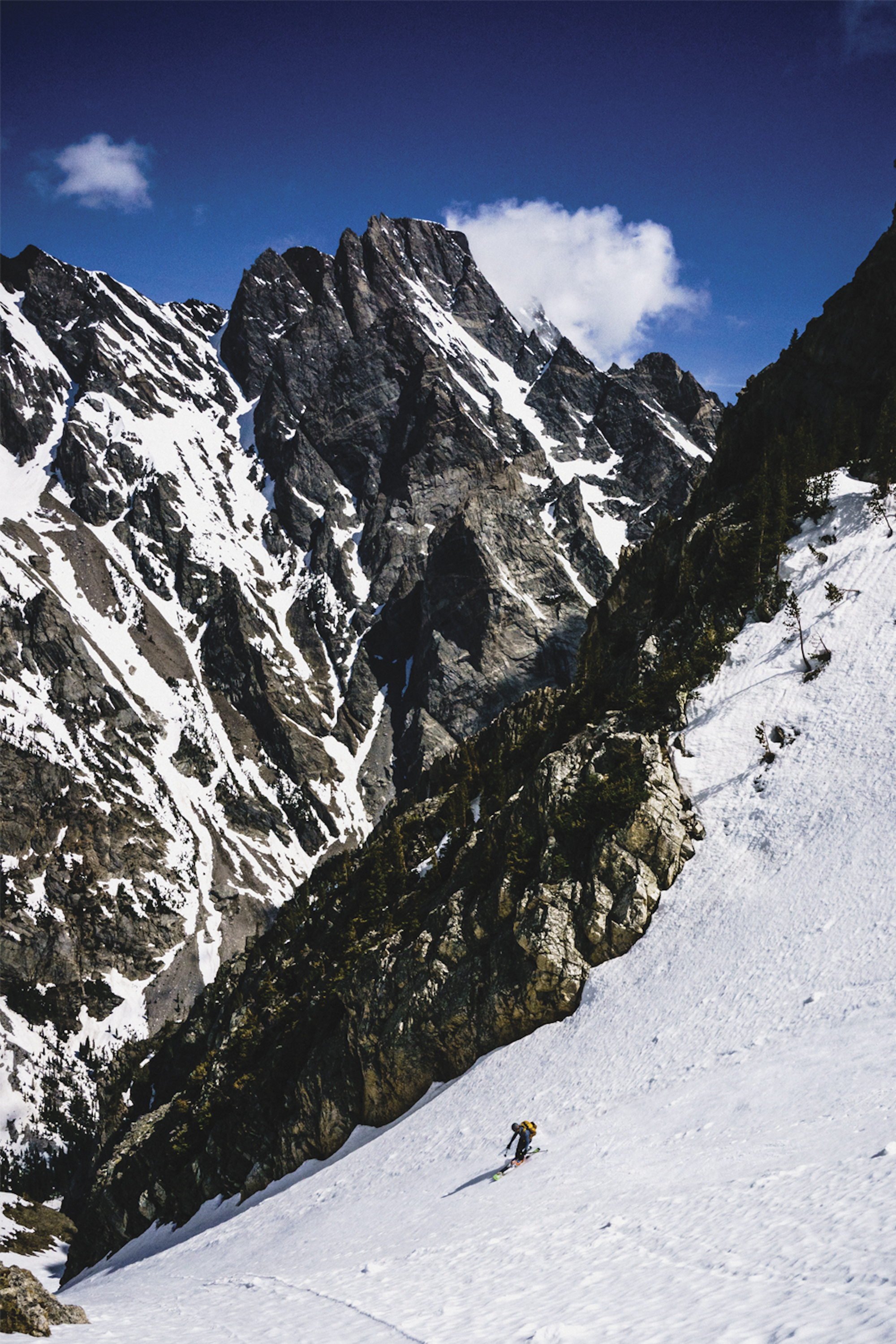
SKIER: Charlie Thomas
Much like the Tetons, you can get lost within the content of TetonAT as you scour over lines and couloirs tucked between Wyoming’s rugged peaks. We did exactly that and sought out a north-facing 2,700-foot couloir called the Fallopian Tube on Mt. Woodring. Even earlier in the season, a friend and longtime Jackson local, and I jumped into a line (new to both of us) that I had scoped out on the website the evening prior—it was our own secret stash as we watched two parties ski the popular and well known adjacent descent while we center-punched the couloir in perfect powder conditions.
However, those hidden soft snow turns were far from the norm last May, although the solitude wasn’t. Aside from the huge pile of grizzly scat and a precocious Marmot that kept weaseling himself towards our camp, we were the only souls at the mouth of Leigh Canyon as we quickly made dinner before the evening thunderstorms. The snow line seemed elusively close yet was still far away. We battled mosquitoes and were taunted by a grouse’s mating call that thumped like a machine gun shooting into a wall. No doubt, summer had sprung and we fell asleep to a lightning show and thunderstorm that pelted outside our tents.


As dawn approached we made a quick breakfast and pot of coffee as the sky’s early morning light turned the darkness to a blue hue. We marched with skis on our backs across a couple miles of rocky moraine fields, eventually reaching the snowline while trying to navigate a safe crossing of the raging creek that was undermining the snow beneath our feet. Finally, we made it to a spot amenable to skis and climbing skins on the north side of the canyon, only to find a small lake that was ninety percent melted out with a shear cliff terminating to its shore—blocking our land access. Charlie skinned out on the last few connected ice sheets as Louis pulled out a small cord in the event we had to take an inadvertent swim. Miles from help and with most skiers on their mountain bikes, we played iceberg roulette. Thankfully, it went cleanly as we climbed back on the snow-banked shore, still dry while laughing and a bit in disbelief.
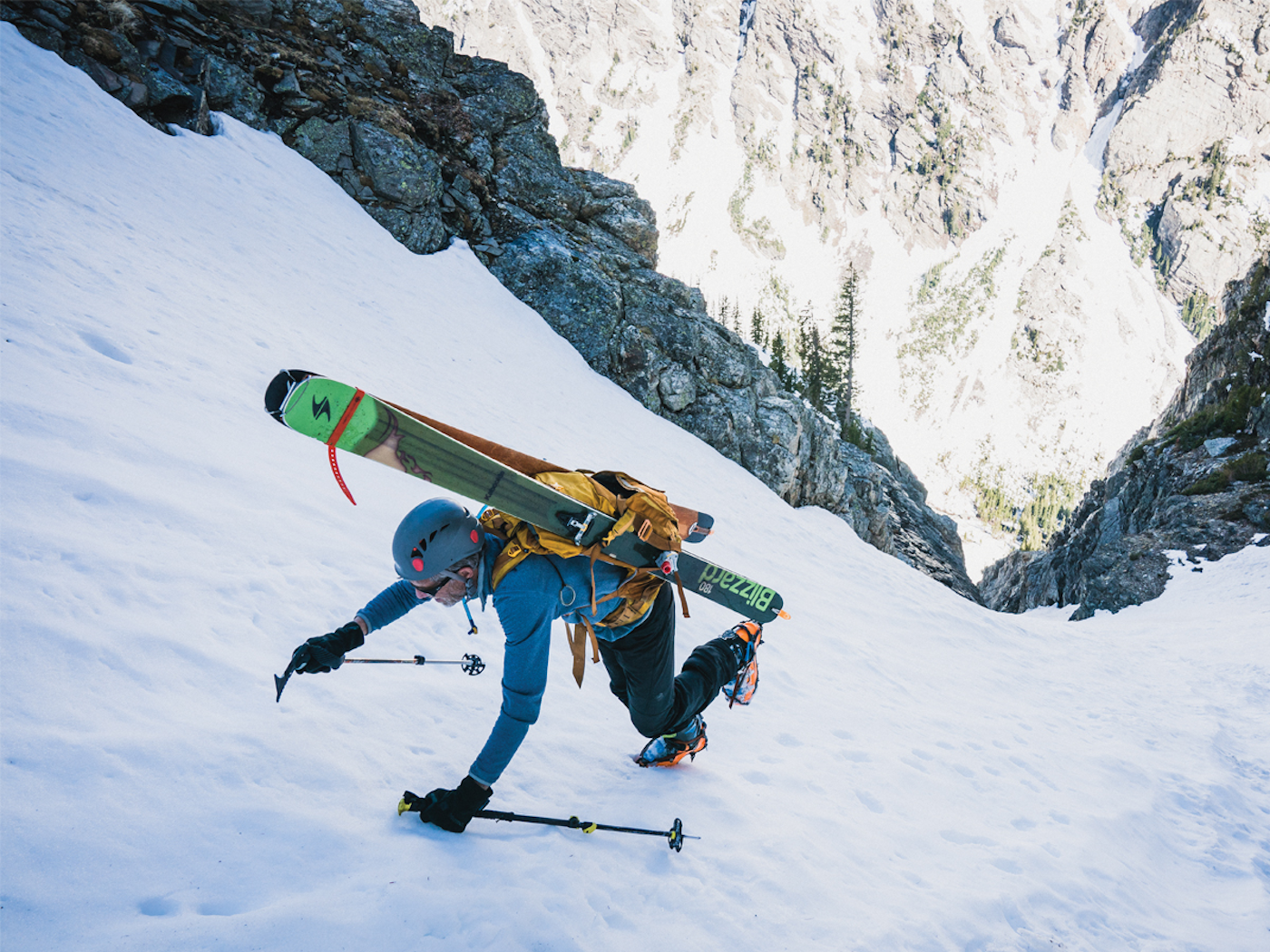
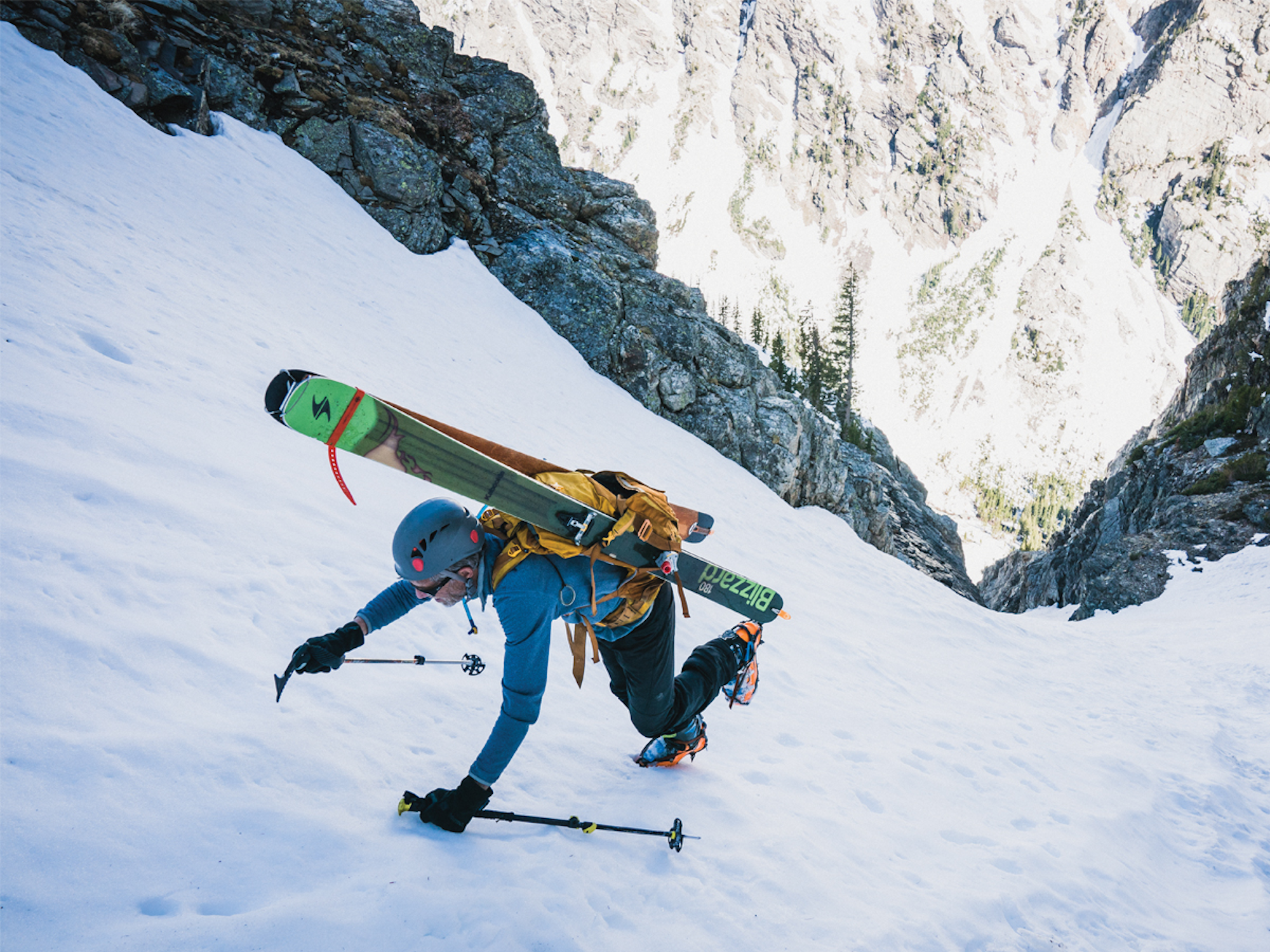
SKIER: Charlie Thomas
However, as we began booting up the couloir, arriving at the mid-line crux, we found more open water. This time it bisected the run, with the remaining ice bulge warranting some attention. As I watched water pour down in front of me and disappear into a gaping hole beneath the surface below, I pulled the plug there. Open water and practicing a couple ice moves on the return, while rushing to avoid rock fall, seemed like too much for the day and my gut told me nature was giving enough signs.
Upon our exit, the increased warming sent shards of ice and snow down the cliffs near Mt. Woodring as we reached our stashed hiking shoes. I glanced up towards Thor Peak thinking of the rowdy Hidden Couloir that Romeo and his primary ski partner Reed Finlay skied, it was one of many Romeo either pioneered or blogged about on TetonAT.
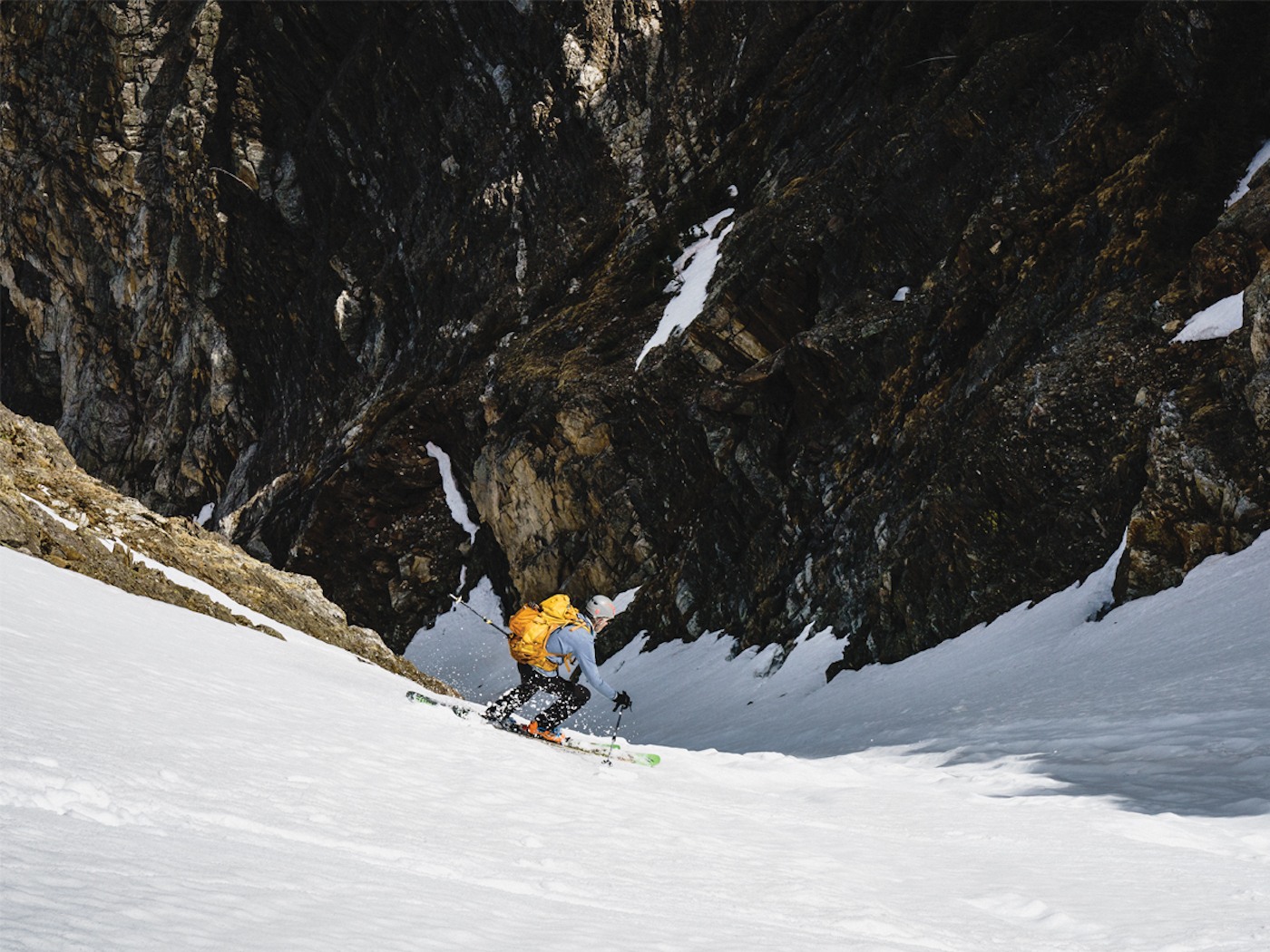
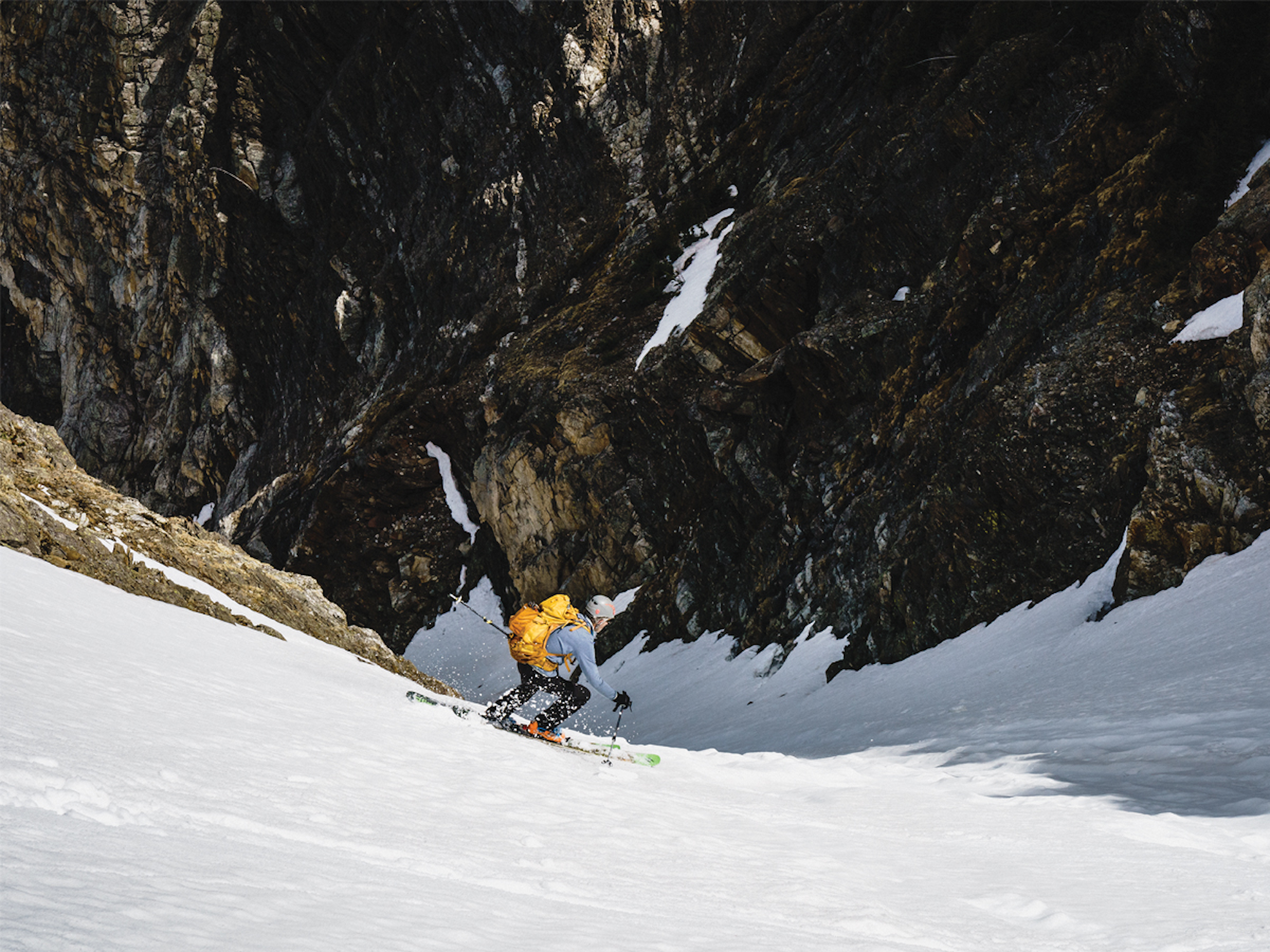
SKIER: Charlie Thomas
The event and decision to pull the cord was clearer to me as I later spoke with Romeo’s friends and partners. The Fallopian, which we skied, was plan B when Romeo and Finlay attempted the Hidden Couloir on Thor Peak—a run they went for three times. Ski mountaineering can sometimes be fixated on objectives, and like Romeo and Finlay, who sought alternatives when things didn’t go as planned, I knew that after having seen the lay of the land in Leigh Canyon I would return with winter-like conditions to ski the run in its entirety.
“The Hidden Couloir was so cool, when we figured out how to get to it,” explains Finlay. “I was like, ‘Whoa it’s steep but there’s powder. It was in January and we rappelled through these ice chimneys. Steve and I were pretty psyched.’”
Finlay met Romeo during their times working as lift operators at Jackson Hole Mountain Resort, and eventually became good friends and primary ski partners in the late ‘90s. “We would have little goals to ski in the park, cherry picking stuff on our days off—lines that are skied regularly now-a-days,” Finlay mentions. “It was the winter of ‘98-‘99 that we started going deep, one weekend we would do a line on his list, the next one for me.” It was after a summer of Romeo working at Moosely Mountaineering in the park—stationed right there in front of the range—that he was able to scope things out.
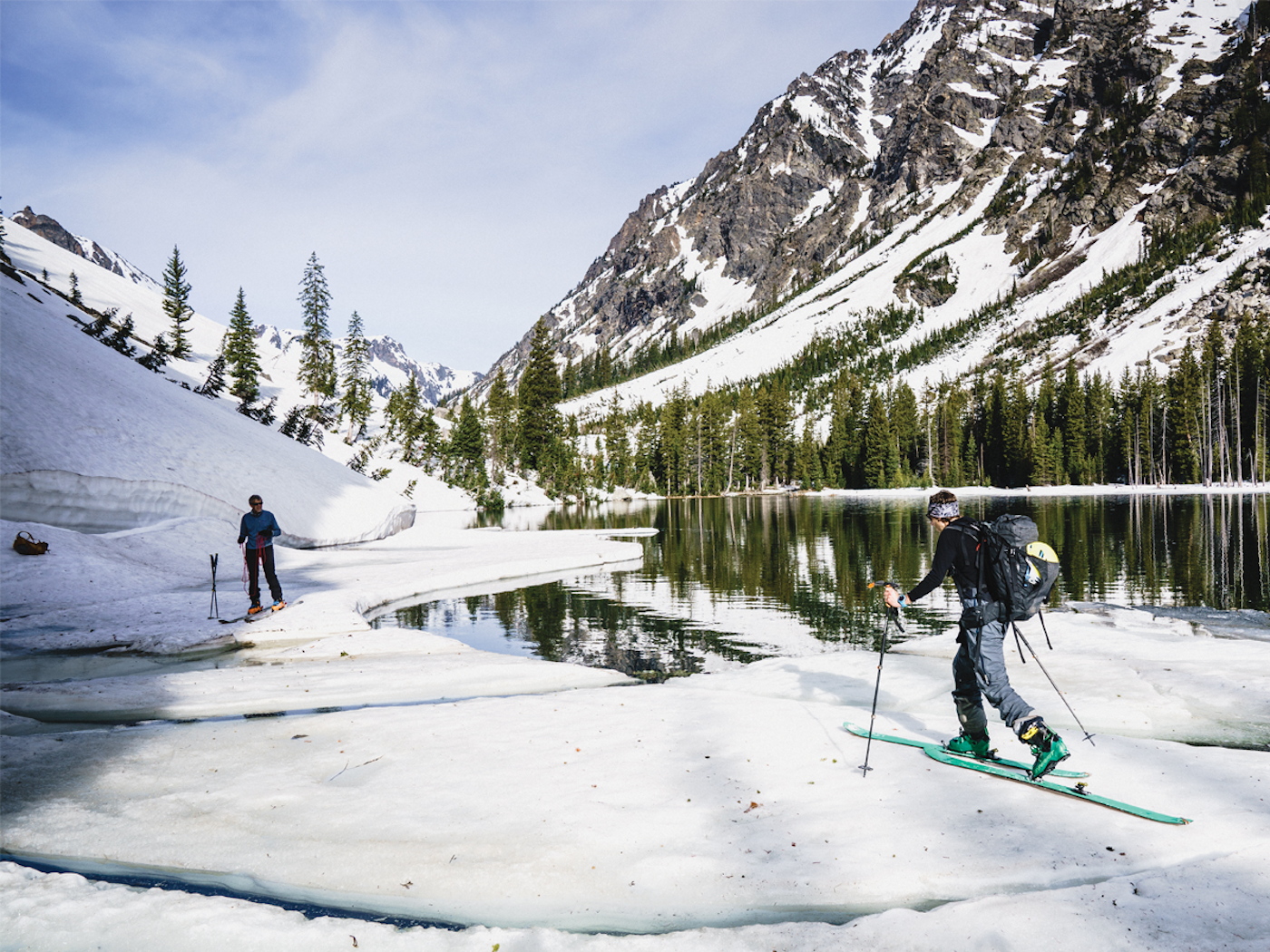
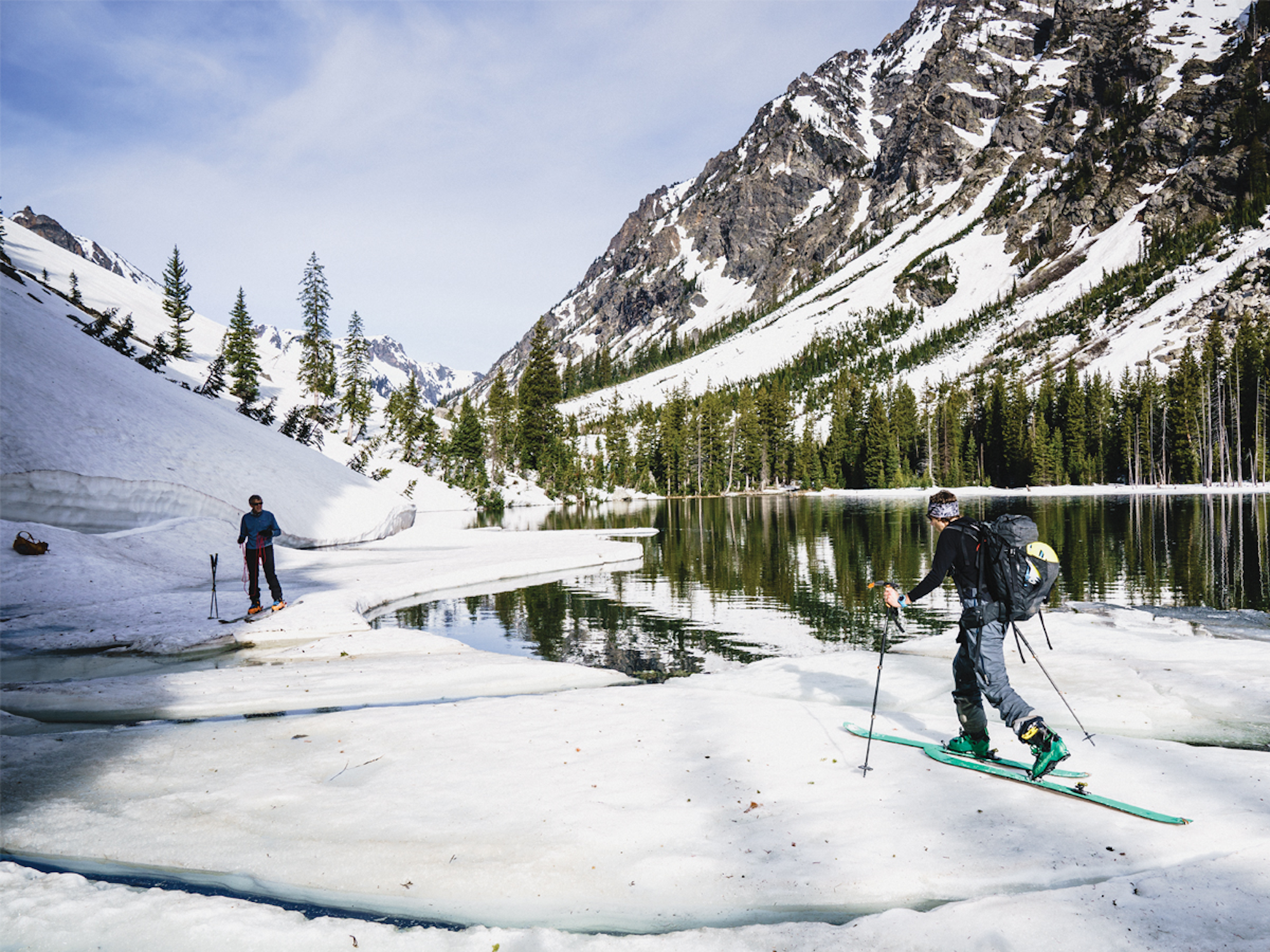
“Steve was a solid and reliable partner and was really excited about the camping and just being there. We would just hang out, have a little whiskey, winter camp and sit around in our down booties… He was like a kid who couldn’t wait to get out when he was at work.”
Each spring, Finlay, who had a child the week before Romeo’s accident, drops off a check to the Foundation. It’s one of many that the Community Foundation of Jackson Hole receives to fund its programs, like the avalanche education course offered through the local high school. “I think Steve would be really proud of all that,” mentions Finlay, speaking to the volume of avalanche education and awareness the fund provides for the community, in addition to the Live to Ski Camp put on by Exum Mountain Guides.
“It was almost as though skiing is what connected him to his soul purpose,” says Heemstra. “He was an extraordinarily unique person, and I don’t think he ever abandoned that ‘Live To Ski’ mantra. I just think he sprinted across the finish line.”

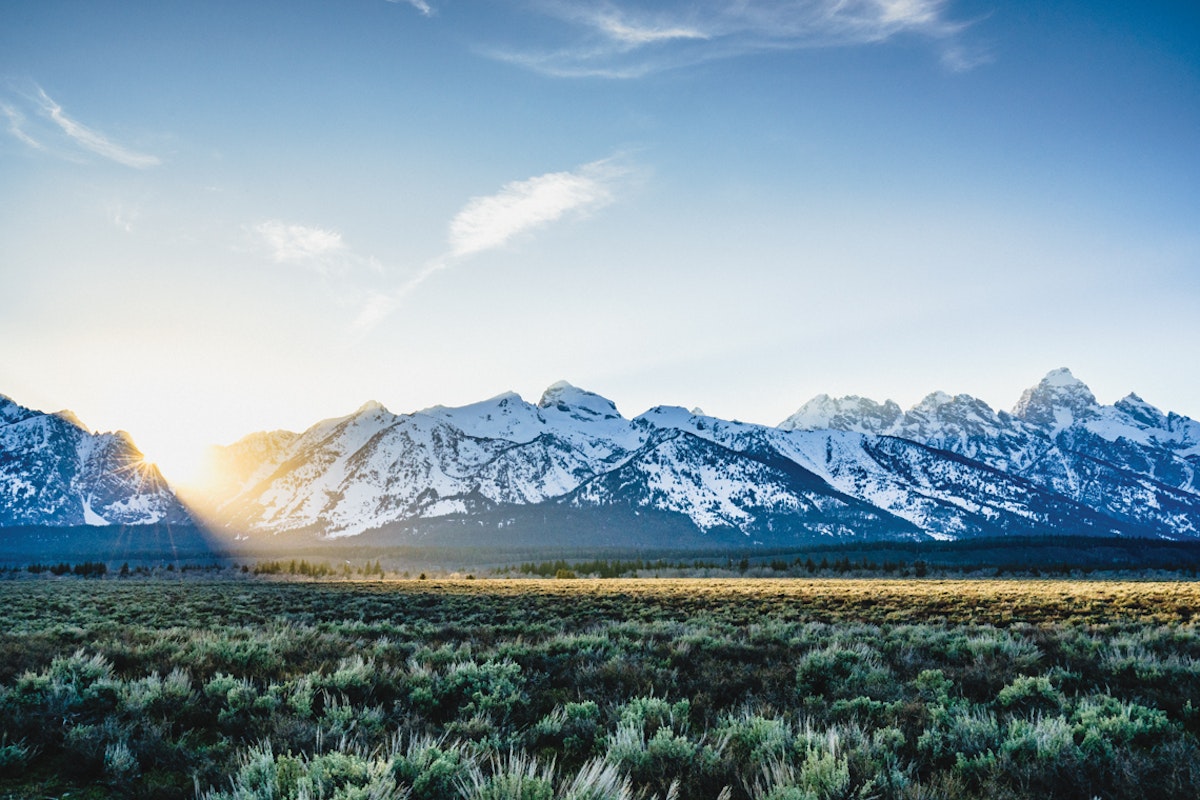
![[GIVEAWAY] Win a Legendary Ski Trip with Icelantic's Road to the Rocks](https://www.datocms-assets.com/163516/1765233064-r2r26_freeskier_leaderboard1.jpg?w=200&h=200&fit=crop)
![[GIVEAWAY] Win a Head-to-Toe Ski Setup from IFSA](https://www.datocms-assets.com/163516/1765920344-ifsa.jpg?w=200&h=200&fit=crop)

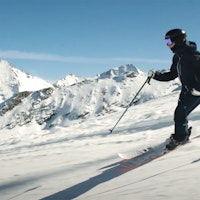
![[GIVEAWAY] Win a Legendary Ski Trip with Icelantic's Road to the Rocks](https://www.datocms-assets.com/163516/1765233064-r2r26_freeskier_leaderboard1.jpg?auto=format&w=400&h=300&fit=crop&crop=faces,entropy)


![[GIVEAWAY] Win a Head-to-Toe Ski Setup from IFSA](https://www.datocms-assets.com/163516/1765920344-ifsa.jpg?auto=format&w=400&h=300&fit=crop&crop=faces,entropy)


